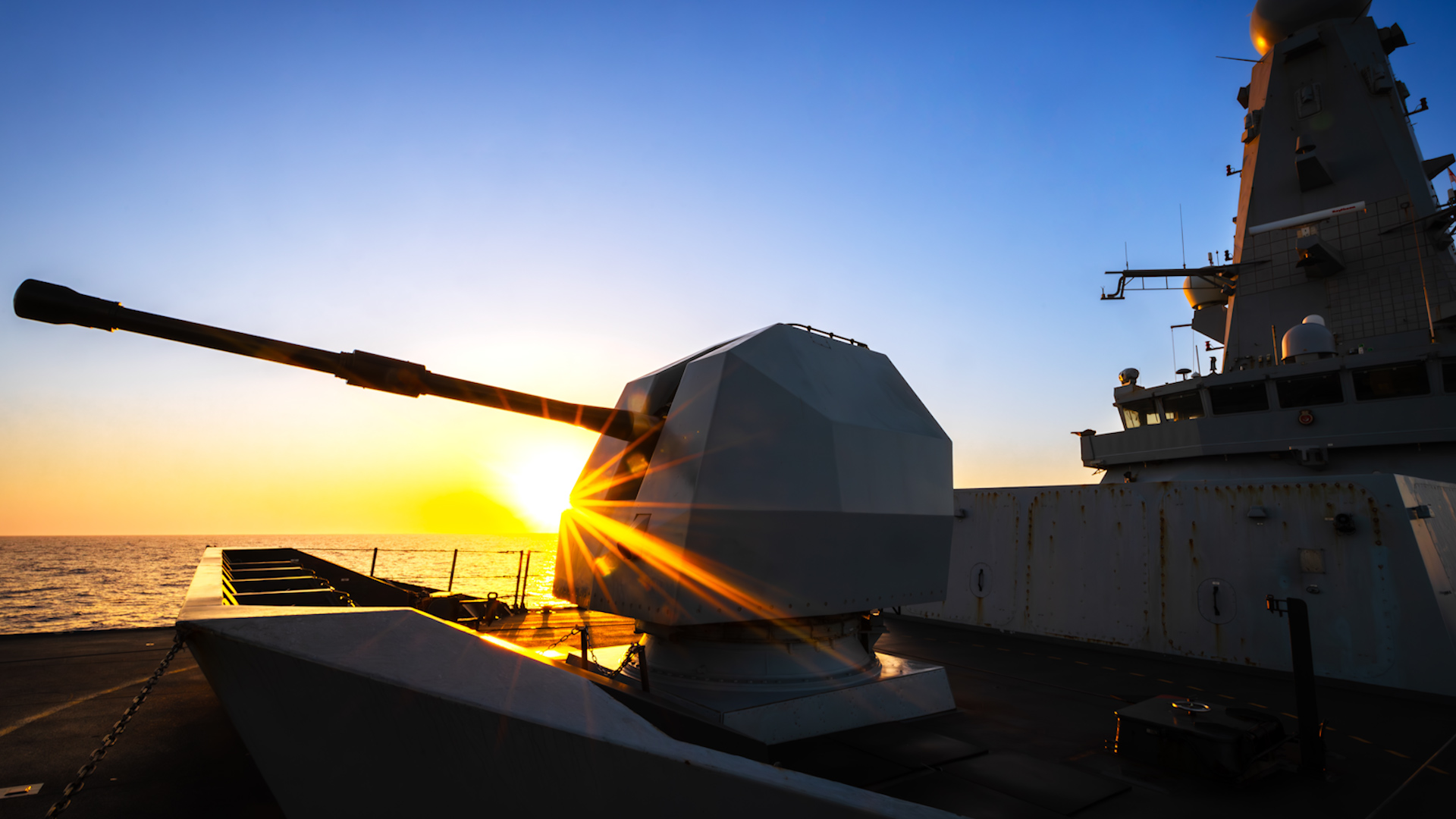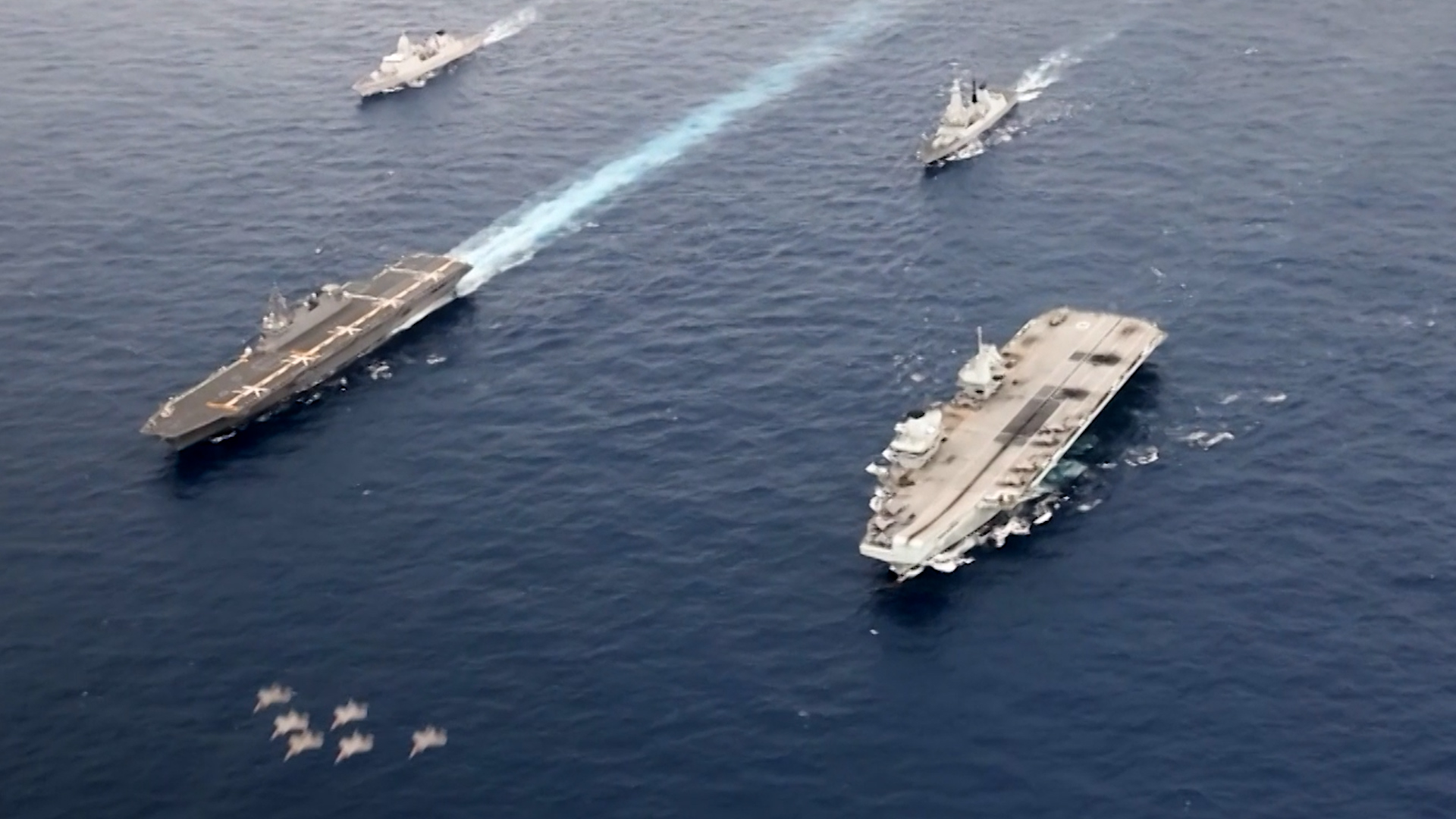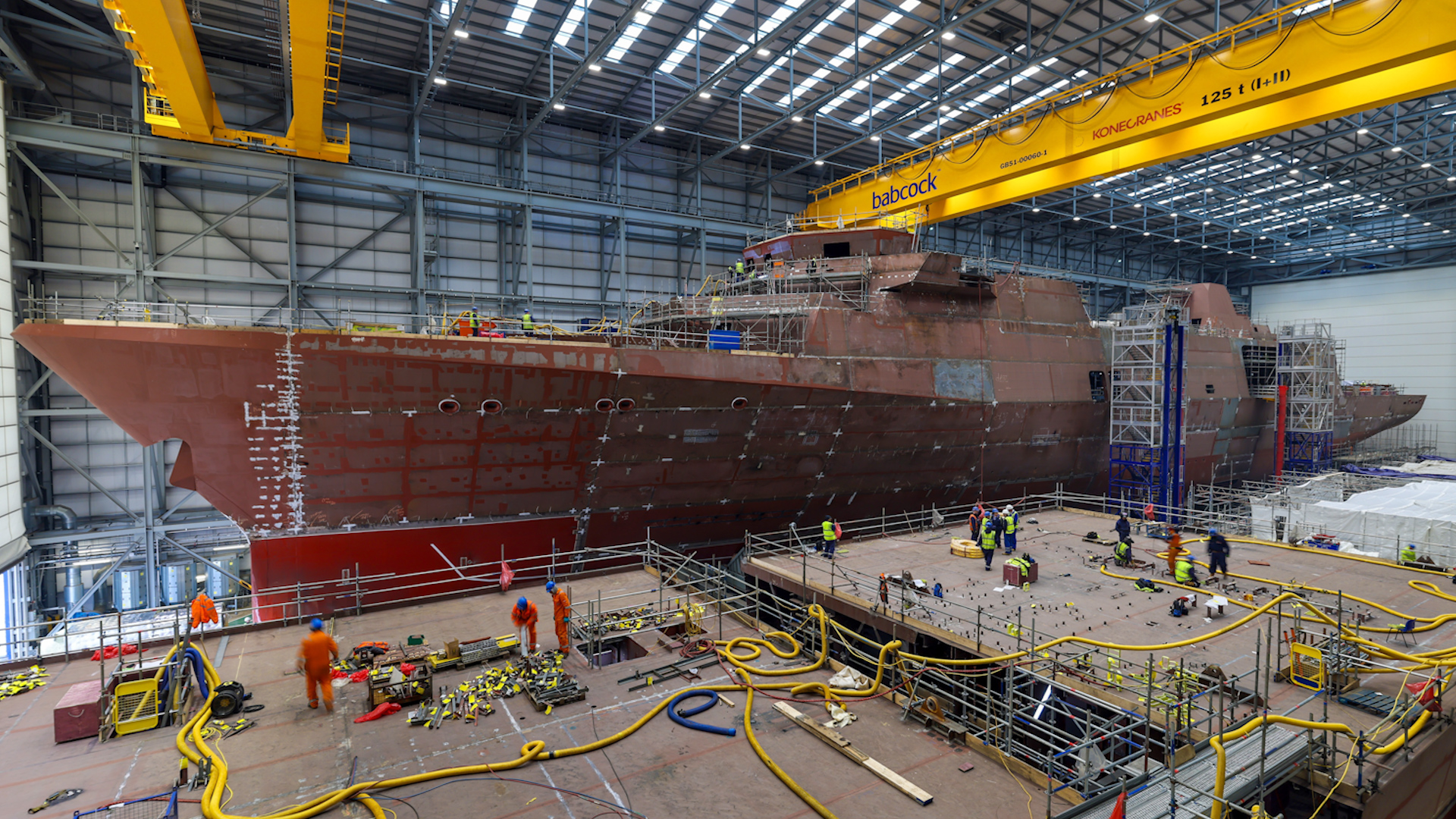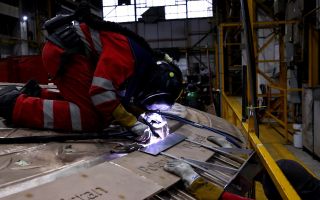
Discipline is key in finding the solution to the defence equipment programme

Retired Royal Navy Commodore Steve Prest has plenty of experience of naval acquisition programmes and the ongoing desire to speed them up.
But the former director of Navy Acquisition says defence inevitably has more to do than it can afford.
During Navy Transformation the then-First Sea Lord used to ask me: "Steve, how can we make Navy acquisition programmes go faster?"
He was impatient to get new capability delivered so that we could phase out older platforms and equipment, and bring in more modern and more capable technology.
Many items in the Navy's inventory (and the same is true of the other services too) are beyond their planned service life, which brings with it a host of problems.
They break more often, they are harder to repair, they are expensive to upgrade, the spare parts are obsolescent and therefore hard to get hold of, and so availability suffers as a result.
As does the budget.
It also means that the new platforms and equipment, with the capability to address more modern threats, are yet to enter service and bring their increased lethality to bear.
So he is right to be impatient, but I used to respond with: "Sure Sir, I can make it go faster – but how much more money have you got to spend how much more quickly?"
And there's the rub.
This week, the Financial Times reported that the Ministry of Defence has written to the main defence suppliers, the so-called Primes, and asked them to identify opportunities for immediate budget cuts to help with "significant in-year fiscal pressure".
An MOD spokesperson stated, as part of the Government's response, that "The NAO [National Audit Office] has also confirmed the largest-ever deficit in the defence equipment plan."
Defence acquisition is much maligned, and indeed there are plenty of examples of poor practice and expensive errors, but there is much good practice too.
There are plenty of dedicated and committed professionals trying to do their best in a challenging environment.
What often hamstrings the procurement and project delivery teams is the annualised budgetary cycle.

Defence, inevitably, has more to do than it can afford.
Why inevitably? Well, there are always more threats out there.
Potential adversaries are evolving and developing their capabilities, and the service chiefs must ensure that their services are as well prepared to meet those challenges as it is possible to be.
There is also the motivation of ambition for one's legacy and the primacy of one's service in the defence landscape – but that's perhaps a conversation for another time.
Whatever the reason, therefore, the temptation is always there to try and pack more into the equipment programme than can sensibly be fitted.
Major defence programmes are, in general, funded to the P50 level.
What, you may well ask, is the P50 level? My apologies for the descent into jargon, but this matters.
There are always risks in delivering projects.
At major points in a project's life, an analysis is conducted of these risks to determine what the probability is of completing the project at any particular time and/or cost.
The P50 level is the point – in either schedule or cost – at which there is a 50% probability of coming in under or over the estimate.
So half of the projects should come in under and half of them over; if we approve and fund to the P50 level.
That's the idea. Except there are certain risks which are excluded. So-called tail-risks are omitted, because – apparently – they 'skew' the results.
These tail risks are low-probability, high-impact risks, like pandemics, and risks from inflation, beyond a certain level, are also excluded.
Improbable events that have had a big effect but for which there was no insurance. And yet, as we have seen, such things can and do happen over the life of defence projects.
Consequently, there is a whole bunch of increased cost in the defence equipment programmes which has no money provisioned to cover for the risks of such eventualities.
We model the budget as P50 but, in reality, there are far more reasons that the programmes will come in over budget than under – which is why programmes tend to be later and more expensive than forecast, even if delivered well.
This is built into the system itself. It is, if you like, set up to fail!
Another challenge is that large defence projects tend to take a long time to deliver.
Partly this is because they are big undertakings, like building an aircraft carrier, and partly because MOD is trying to do so much all at once that it can't afford to go faster – it needs to spread its payments for the work over many years.
In negotiating contracts, therefore, we often ask our contractors to go more slowly because we can't afford to pay them more quickly.
In the jargon: to make the project affordable in profile. Our industry partners tailor their capacity (facilities and workforce) accordingly.
That's why you can't suddenly speed up delivery if you happen to find some more money down the back of the sofa, it takes time to ramp up capacity.

To try to minimise the risk carried by the Government, the MOD is in favour of fixed-price contracts.
This is where we pay a set amount and the contractor carries the risk of cost increases (subject to certain exemptions).
The Type 31 frigate contract is just such an arrangement and it has recently been reported that Babcock will make a loss on the contract.
This isn't a sustainable business model for them, but I suspect that they're big enough to carry the risk as a one-off.
The flip side of this, however, is that the more we aim for fixed-price contracts, and thus expect the industry to carry more risk, the more it is the MOD's responsibility to simply pay the bills when they come due.
In a cost-plus model, where you pay the contractor what it costs plus a profit margin, there is more scope to turn the wick up and down.
Under a fixed price arrangement, it is also much harder to ask your supplier to find efficiencies that they pass on to you.
If you expect a company to carry the risk, then they – within reason – should also benefit from any efficiencies to increase their margins.
That's how the incentivisation is intended to work. Otherwise, you risk undermining the whole basis of the commercial deal!
If we end up having to renegotiate such deals as a consequence of poor financial planning, the contractors will have us over a barrel. Once you have signed the contract, changing it is extraordinarily expensive!

But if such costs are "baked-in" to the equipment plan, why do they still take MOD by surprise?
Once MOD has signed the contract, these are non-negotiable bills that will come due. They'll only be delayed if the contractor fails to deliver on time. These are not budgetary choices for savings.
Yet ministers, senior officers and officials still want to be offered a choice in each annual budget cycle and defence reviews, even though these are decisions and commitments that have already been made.
They want to shape the defence programme to their visions and priorities. This is not wholly unreasonable. Each wants to make their mark, and each is faced with changing circumstances in an unstable world.
But by not setting the budget strictly against those commitments that have already been made, even where the impact might be felt in the here and now, they find themselves in a bind.
If ministers and service chiefs want agility in the equipment programme to change their priorities and to have the choice to turn the financial volumes in a project up and down on an annual basis, then the contracting mechanism must allow for that.
But, of course, that will transfer greater liability onto the MOD and be far more costly. It's much harder to make a value-for-money argument to the Treasury that buys an option against capricious leadership.
We can't have it both ways. How much are we willing to pay for such flexibility? The evidence is not much!
The former US Secretary of State, James Baker, used to say that you should "never make a decision before you have to".
This is fine, but seniors in defence don't always fully consider decisions that have already been made if they weren't the ones to make them, nor consider that they are bound by such decisions in reshaping their plans.
A failure to accept that and to plan accordingly is a major cause of the financial pickle that defence currently finds itself in.
Industry will try to help, of course, but it is the smaller players down the supply chain that will be squeezed. Some may go out of business as a result.
What's the solution?
Simply greater discipline in accepting the commitments that we make, both in understanding their true likely cost and in committing to them once the contracts are signed will help enormously.
The defence equipment programme is not a greenfield site each planning round – it should not be treated like one.
Commodore (Ret'd) Steve Prest is an independent consultant and advisor who can be found on X as @fightingsailor.
In his almost 30 years of service, he has garnered extensive experience in the business of delivering military capability for the UK Armed Forces.
He is an expert in Capability and Acquisition and has been the Senior Responsible Owner of several major defence programmes.









